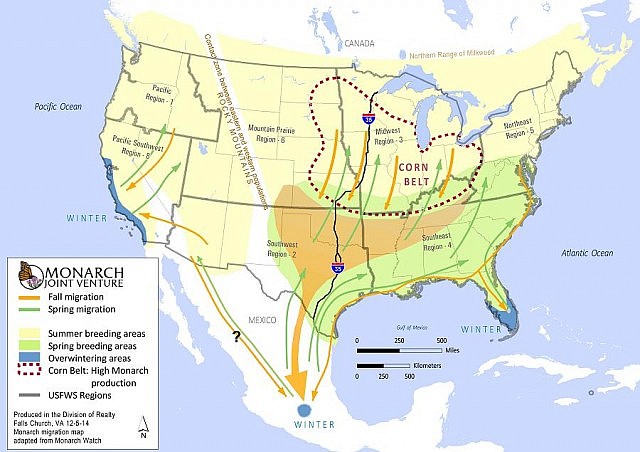
It was this time last year that the GreenUP office came alive with butterflies. Our GreenUP Ecology Park staff went on a mission that involved searching out monarch caterpillars and transporting them back to our Aylmer St. office so the amazing transformation into butterflies could be witnessed first-hand.
The caterpillars were carefully placed in a netted enclosure called a rearing tent — along with an ample supply of milkweed, the plant they rely on for survival.
Monarch butterflies begin their life as an egg laid on the underside of a milkweed leaf. Three to five days later, the eggs hatch and larvae emerges. It’s in this caterpillar stage that monarchs do most of their growing. They begin life by eating the eggshell they emerged from, and then move on to the plant on which the eggs were laid. The larvae can grow up to 2,000 times their original size, molting and shedding skin as they expand.
At first, the new skin is very soft and provides little in the way of support or protection. The new skin soon hardens and molds itself to the caterpillar, which often eats the shed skin before continuing its milkweed diet. The intervals between molts are called instars, of which monarch caterpillars go through five.
The caterpillars spend their time gorging themselves on milkweed and, after the eating is done, find a suitable location where they won’t be disturbed — so the transformation into a butterfly can begin.

After the appropriate amount of time has passed, the butterflies slowly wiggle free from the chrysalis and pump fluid from their bodies into to their wings. The butterflies cling to their former home, allowing their wings to dry and stretch out before finally taking flight in search of nectar-rich flowers.
The primary job of the adult stage is to reproduce, mate, and lay eggs that will become the next generation of butterflies. Females begin laying eggs right after their first mating, and both sexes will mate several times during their lives. There are typically four generations of monarchs over the course of a breeding season.
Butterflies that emerge this time of year are the final generation for the year and will be faced with the daunting task of migrating south to overwintering grounds in central Mexico. There they will cluster together, suspended in trees, waiting out the long winter in the north. Sadly, many won’t safely make it there and back.

The harsh reality is that monarchs are vanishing, and fast. According to Monarch Watch, since March 2013 the North American population of monarch butterflies has declined by 59% — the lowest recorded population status since 1975.
Why is there such a sharp decline in monarchs? It all comes down to milkweed. Monarchs’ lives depend on milkweed for both food and breeding and, in recent years, there’s been less and less of it. This is especially true in the United States, where milkweed is killed en masse with herbicides in agricultural areas.
To flourish, monarchs need a “milkweed corridor” that extends from their northern range in Ontario all the way along their migration route, through Texas and into Mexico. You can do your part to help the monarchs by planting milkweed in your backyard. This helps to complete the northern end of the corridor.
Monarch butterflies are an important indicator species because of their large habitat and migration range. During late fall in the Peterborough region, monarchs begin their 4000-kilometre migration journey to central Mexico’s Trans Volcanic Mountains to overwinter in the oyamel fir forests.

You can learn more about monarchs by joining GreenUP later this month for a fascinating workshop and field study.
In this workshop, participants will learn about the life cycle and habitat of the monarch butterfly, collect larvae, and help GreenUP gather data for two citizen science projects. Participants will also have the option to learn how to create a monarch-rearing tent and witness the amazing metamorphosis from caterpillar to butterfly.
GreenUp’s Monarch Butterfly Workshop is scheduled for Saturday, August 22nd from 10 a.m. to 1 p.m. in Peterborough County (the exact location is still to be determined). Registration is limited.
Please contact Marcy at workshops@greenup.on.ca or by phone at 745-3238 ext 212 for more information and to register. The cost for the workshop is $10 (or $15 if you want a monarch-rearing tent).



























